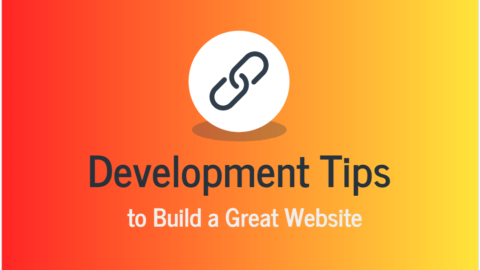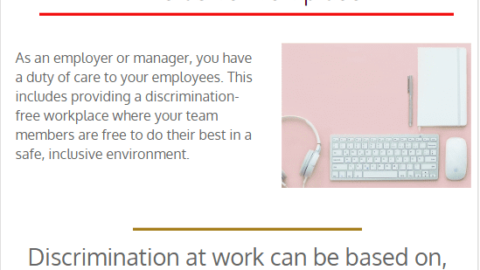Does Your Workplace Need an Automated External Defibrillator?
An automated external defibrillator (AED) is a life-saving device that can be used to restore a normal heartbeat in the event of cardiac arrest. An AED delivers an electric shock to the heart, which, when you use it correctly and at the right time, can help restore its normal rhythm. By having an AED available, you are helping create a safe environment for your employees and customers.
Table of Contents
If someone experiences sudden cardiac arrest in your workplace, quick action is necessary to increase their chance of survival. Calling 911 and starting cardiopulmonary resuscitation (CPR) are the first steps, but it’s not enough. An AED must also in use as soon as possible.
Having an AED on-site can ensure that your workplace is prepared for emergencies. It’s also a great way to ensure that your employees and customers are safe in the unlikely event of a cardiac arrest occurring on the premises.
How Having An AED Saves A Life
When sudden cardiac arrest occurs, time is of the essence. If an AED is readily available at your workplace, it can increase the chance of survival for those affected.
The shock delivered by an AED works to restore the heart’s natural rhythm, which can help save a life when used correctly and promptly. Having emergency first aid at work training on how to use the AED and cardiopulmonary resuscitation (CPR) makes all the difference.
An AED also protects those providing CPR or medical care in case another person needs to step in and take action quickly. Having an AED on site ensures that you are prepared in a cardiac emergency, with all the needed tools to help save a life.
How To Identify If Your Workspace Needs An Automated External Defibrillator
You may want to consider investing in an AED if your workplace has many people, is in a remote location, or has employees at risk of cardiac arrest. If your business is open to the public or located near a busy area, it’s also essential to have an AED on hand in case someone needs help immediately.
The cost of purchasing and maintaining an AED varies depending on your chosen model and features. However, it is an investment that can save lives and protect staff and customers from harm.
As part of your emergency preparedness plan, an automated external defibrillator (AED) can be the difference between life and death for those affected by sudden cardiac arrest. Having an AED on site can provide peace of mind that your workplace is prepared should an unlikely event occur and give staff and customers the best chance at survival.
Things To Consider Before Investing In An AED
Before investing in an AED, there are several essential pointers to check to ensure your first-aider or appointed person is correctly trained. This includes:
- Ensuring staff are adequately trained to use the AED and perform CPR safely.
- Make sure the device is registered with a reputable medical provider.
- Having an emergency plan in place to ensure the AED is available.
- Adhering to local and state laws when deploying an AED.
- Scheduling regular maintenance checks on the device.
When Should You Use An Automated External Defibrillator?
An AED should only be used in the event of an adult, child, or infant experiencing sudden cardiac arrest. It’s important to remember that misusing the device can cause further damage. Any time you are unsure of the situation, it is best to refer to EFAW training and contact medical professionals for assistance.
While purchasing and maintaining an automated external defibrillator aed may seem daunting, it can provide peace of mind that your workplace is ready in an emergency. A workplace with an AED and first-aiders ready to respond to an emergency can:
- Increase the chance of survival.
- Provide an extra layer of protection for those providing medical care.
- Ensure employees and customers are safe in the event of a cardiac emergency.
Ultimately, having an AED on site is a great way to ensure that your workplace is prepared should the unlikely event occur.
Which Industry Needs An Automated External Defibrillator?
Automated external defibrillators should be readily available in all workplaces, including hospitals, schools, public buildings, and industrial settings. This is especially true for locations with many people, remote locations, or employees at risk of cardiac arrest.
In addition to medical facilities and emergency services such as police stations and fire departments, AEDs are crucial for specific industries with high-risk workers. These include:
- Manufacturing plants
- Construction sites
- Mining operations
- Oil refineries
- Factories
- Warehouses
Having an AED on site can help protect workers should the unlikely event of a sudden cardiac arrest occur.
Why Should You Use an AED?
In the United States, sudden cardiac arrest is consistently among the top causes of mortality. In point of fact, there will be more than 350,000 individuals who have a cardiac arrest this year. The use of an AED is currently the sole method available for reestablishing a normal heart rhythm after a cardiac arrest.
You certainly have the ability — and indeed, the obligation – to seek the aid of qualified medical specialists. Although, the typical response time for first responders after 911 call is 8-12 minutes. Since the chances of survival reduce by around 10% for each minute that defibrillation is late, it is essential to have access to an AED and to know how to use one.
Final Words
An automated external defibrillator on site is integral to any workplace’s emergency preparedness plan. From medical facilities to oil refineries, AEDs can help people during cardiac arrest and increase their chances of survival.
As with any emergency plan, it is essential to ensure staff can use the device correctly and have access to it.

Business Developmeny Manager at PAS InfoCom Technologies Ltd. Experienced in project management with a demonstrated history of working in the information technology and services industry.










